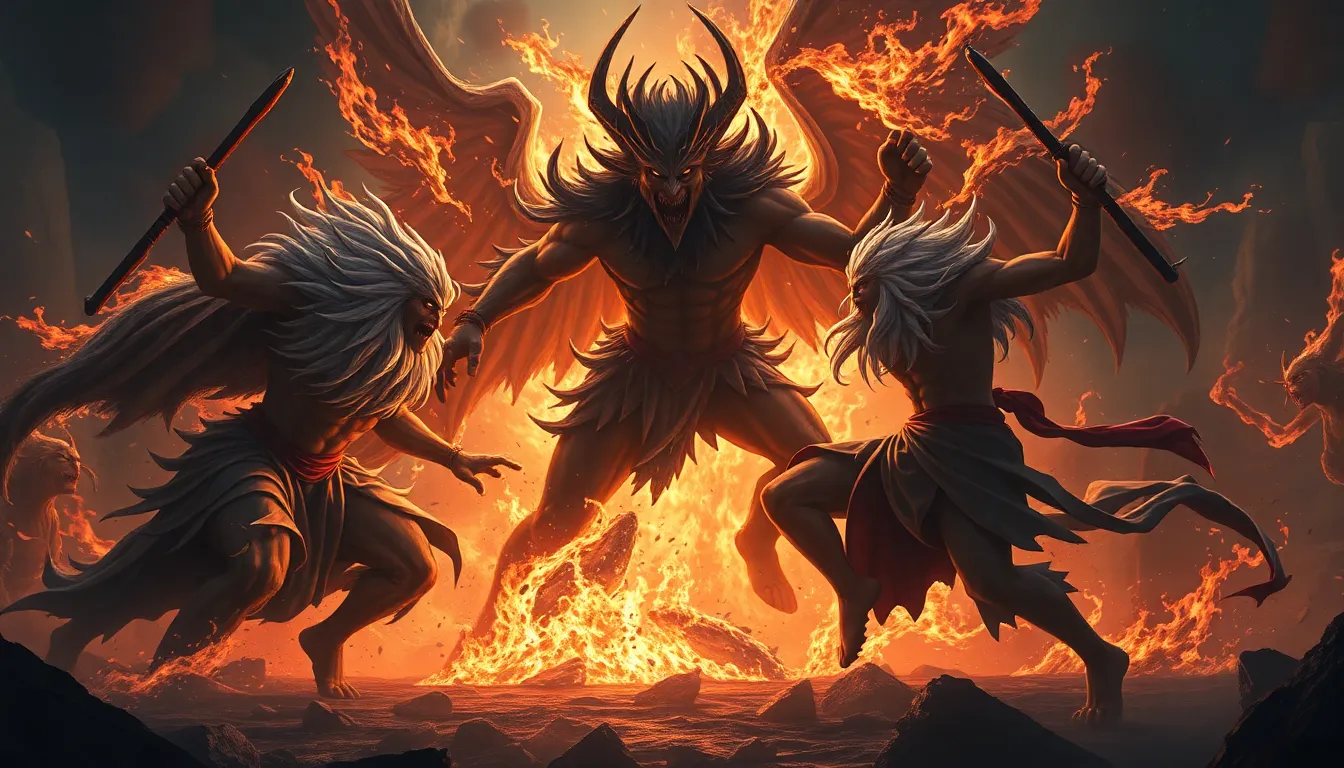The Underworld: Myths That Explore the Nature of Life and Death
I. Introduction
The concept of the Underworld has fascinated humanity throughout history, manifesting in various forms across cultures. Defined as a realm where souls reside after death, the Underworld serves as a vital element in understanding the intricate relationship between life and death.
Myths play a significant role in shaping our perceptions of these themes, offering insights into the fears, beliefs, and hopes of different societies. This article delves into diverse mythologies around the Underworld, exploring how they interpret the journey of the soul and the implications of mortality.
II. The Concept of the Underworld Across Cultures
The Underworld is a recurring theme in global mythologies, characterized by various features such as judgment, punishment, and the potential for rebirth. Despite the differences in cultural contexts, certain general characteristics can be observed:
- A realm separate from the living world.
- Guardians or ferrymen who assist souls in their journey.
- Judicial processes that assess the deeds of the deceased.
- Possibilities of rebirth or reincarnation.
In a comparative analysis, we find noteworthy distinctions and similarities among different Underworlds:
- Greek Mythology: The Underworld is personified by Hades, a shadowy domain where souls are judged.
- Egyptian Beliefs: The Duat serves as a passage for the deceased, emphasizing the importance of moral conduct.
- Norse Mythology: Hel, ruled by the goddess Hel, presents a contrasting fate for warriors who die in battle.
Across these narratives, common themes of judgment and rebirth emerge, reflecting humanity’s desire to make sense of existence and the afterlife.
III. Greek Mythology: Hades and the Afterlife
In Greek mythology, the Underworld is known as Hades, named after its ruling god. Hades is more than a mere graveyard; it represents the final destination for souls, where they face judgment based on their earthly lives.
Charon, the ferryman, plays a crucial role in this journey, transporting souls across the River Styx. Without a proper burial, souls are said to wander the shores, unable to cross into the afterlife.
Within Hades, there are distinct regions, including:
- Elysium: A paradise for the virtuous and heroic, where souls experience eternal bliss.
- Tartarus: A dark and torturous pit for the wicked, where they endure punishment for their misdeeds.
This duality in Hades reflects the Greeks’ understanding of morality, justice, and the consequences of one’s actions in life.
IV. Egyptian Beliefs: The Duat and the Journey of the Soul
The Duat represents the Egyptian Underworld, a complex realm where the deceased navigate trials before reaching the afterlife. The journey through the Duat involves various challenges, including encounters with gods and mythical creatures.
A pivotal moment in this journey is the weighing of the heart ceremony, where the heart of the deceased is weighed against the feather of Ma’at, the goddess of truth. This ceremony symbolizes the moral assessment of one’s life:
- If the heart is lighter than the feather, the soul is deemed worthy and may enter the Field of Reeds, a paradise.
- If heavier, the soul faces annihilation by Ammit, a fearsome creature.
Osiris, the god of the afterlife, plays a central role in Egyptian beliefs, representing resurrection and eternal life. The promise of rebirth into the afterlife reflects the Egyptians’ deep connection to the cycles of nature and the afterlife.
V. Norse Mythology: Hel and the Afterlife
Norse mythology introduces Hel, a realm ruled by the goddess Hel, where those who die of illness or old age reside. Unlike Elysium or Valhalla, Hel is not depicted as a place of punishment but rather as a waiting ground for souls.
In Norse beliefs, Valhalla, the hall of slain warriors, stands in stark contrast to Hel:
- Valhalla: Reserved for those who die heroically in battle, promising glory and feasting in the afterlife.
- Hel: A more mundane existence, where souls continue their lives in a somber and shadowy environment.
The cyclical nature of life and death in Norse mythology emphasizes the inevitability of fate, suggesting that death is merely a transition rather than an end.
VI. Mesopotamian Myths: The Underworld of Kur
The Underworld in Mesopotamian mythology, known as Kur, provides insights into the beliefs of Sumerians and Babylonians regarding life after death. Kur is often described as a gloomy and desolate place, contrasting sharply with the vibrant lives of the living.
The gods play a critical role in the afterlife journey, with various deities overseeing the fate of souls. The concept of the “House of Dust” reflects a somber view of the afterlife, where souls lead a shadowy existence, emphasizing the transient nature of life.
VII. Asian Perspectives: Buddhism and the Cycle of Rebirth
Buddhism presents a unique perspective on the afterlife, introducing the concept of Naraka, a realm of suffering where beings experience the consequences of their actions. However, Naraka is not eternal; rather, it is a temporary state within the cycle of samsara, the cycle of birth, death, and rebirth.
Karma plays a crucial role in determining one’s journey through Naraka and future rebirths:
- Positive actions lead to favorable rebirths.
- Negative actions result in suffering and lower forms of existence.
The ultimate goal in Buddhism is to achieve enlightenment and escape the cycle of rebirth, symbolizing a profound understanding of the nature of existence and suffering.
VIII. Indigenous Myths: The Underworld in Native American Cultures
Indigenous myths vary widely among Native American tribes, with each culture offering unique interpretations of the Underworld. Death is often viewed as a transition rather than an endpoint, emphasizing themes of renewal and continuity.
Common motifs include:
- The symbolism of death as a necessary part of life.
- Stories of ancestral spirits guiding the living.
- The cycle of nature, reflecting the interconnection between life and death.
These narratives illustrate a deep reverence for ancestors and the natural world, highlighting the belief that life continues even after death.
IX. The Psychological and Philosophical Implications of Underworld Myths
Underworld myths reflect fundamental human fears and hopes about death, offering comfort and understanding in the face of mortality. They serve as vehicles for storytelling, allowing societies to express their collective anxieties and aspirations.
These narratives provide a framework for exploring philosophical questions about existence, morality, and the afterlife. They remind us of our shared humanity and the universal quest for meaning in the face of the unknown.



